The 1920s and 1930s marked the golden age of custom coachbuilding, a time when the elite class expressed their individuality through uniquely crafted automobiles. While names like Waterhouse, Figoni & Falaschi, and Murphy became synonymous with bespoke automotive artistry, an unexpected coachbuilder from Belgium, Jonckheere Carrossiers, dared to reimagine the prestigious Rolls-Royce. Their creation, a 1925 Phantom I re-bodied with avant-garde design, stands as a testament to daring innovation and is arguably the most distinctive Rolls-Royce coachwork ever conceived.
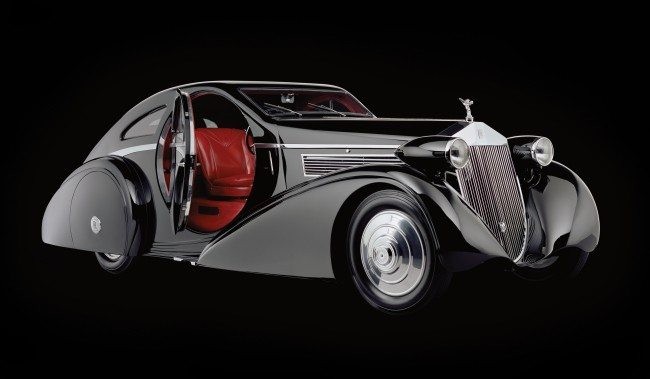 Front quarter view of 1925 Rolls-Royce Phantom 1 Jonckheere Coupe showcasing its round door and sleek black body
Front quarter view of 1925 Rolls-Royce Phantom 1 Jonckheere Coupe showcasing its round door and sleek black body
The Phantom I Era: Power Meets Bespoke Styling
In 1925, Rolls-Royce introduced the New Phantom, later known as the Phantom I, succeeding the Silver Ghost. Faced with growing competition, Rolls-Royce focused on enhancing power. The Phantom I retained the 40/50 chassis but featured an enlarged 7668cc engine with overhead valves, a step up from the previous 7428cc side-valve engine. This powertrain upgrade, coupled with improved front-wheel brakes, provided a significant performance boost. The shift to overhead valves also necessitated a taller bonnet, subtly influencing the styling direction for coachbuilders crafting bodies for the Phantom I chassis.
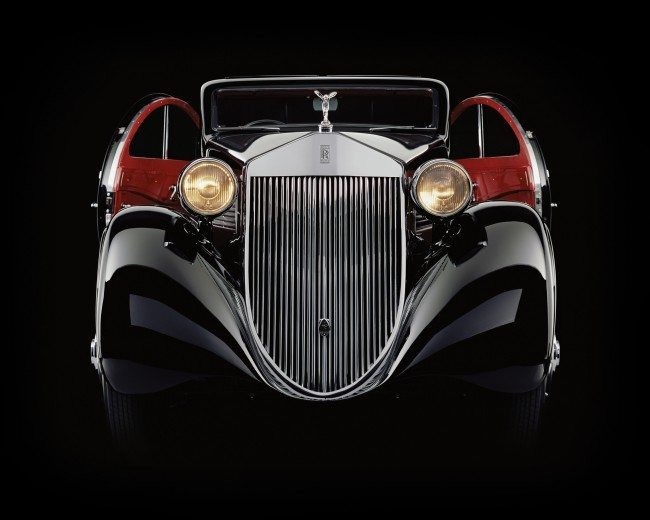 Rolls-Royce Phantom 1 Jonckheere Coupe with round doors open, revealing the custom interior and unique door mechanism
Rolls-Royce Phantom 1 Jonckheere Coupe with round doors open, revealing the custom interior and unique door mechanism
This particular Phantom I began its journey with a Hooper Cabriolet body, but fate had other plans. Never delivered to its initial Detroit purchaser, it was resold to the Raja of Nanpara. After several owners and a sojourn through northern India, the chassis arrived in Belgium in 1932. Two years later, the Hooper body was replaced at Jonckheere workshops, embarking on its transformation into a rolling sculpture.
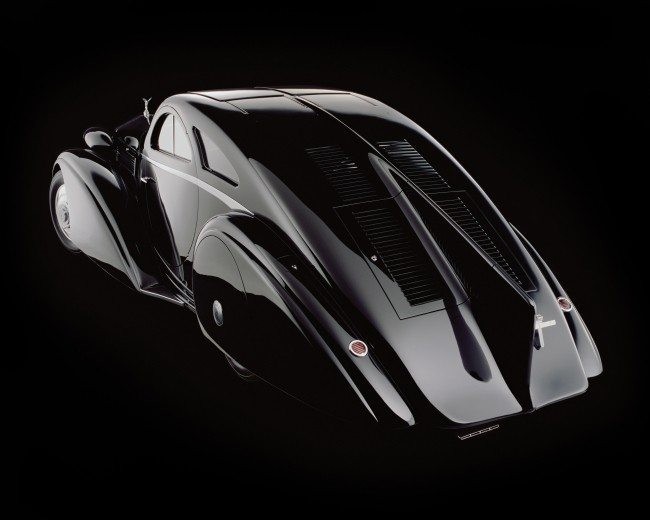 Close-up of the 1925 Rolls-Royce Phantom 1 Jonckheere Coupe's vertical tail fin, highlighting its aerodynamic design and custom bodywork
Close-up of the 1925 Rolls-Royce Phantom 1 Jonckheere Coupe's vertical tail fin, highlighting its aerodynamic design and custom bodywork
Jonckheere Carrossiers: From Commercial to Custom Car Mastery
Established in 1881 as carriage builders, Henri Jonckheere’s company transitioned into automobiles in 1902. His son, Joseph Jonckheere, propelled the company to success in 1922 with innovative bus bodies. However, luxury car coachwork remained a significant part of Jonckheere’s production well into the early 1930s. The aerodynamic “fastback” body style adopted for this Phantom I reflected the era’s design trends, drawing inspiration from French luxury chassis adorned by coachbuilders like Jacques Saoutchik and Figoni & Falaschi, known for their streamlined elegance.
Daring Design: Breaking Rolls-Royce Conventions
Jonckheere boldly challenged the traditional Rolls-Royce aesthetic. In the early 1930s, modifying the iconic vertical grille was almost unheard of. However, Jonckheere deemed it essential to achieve the desired streamlined profile for the Phantom’s new body. Bullet-shaped headlights, flowing fenders, and a dramatic vertical tailfin extending along the boot lid contributed to the coupe’s sleek and elongated form. Inspired by Figoni’s experimentation with oval doors, Jonckheere took a bolder step with massive, perfectly round doors. These doors, while visually striking, presented a challenge for window operation, ingeniously resolved with a unique two-piece scissor window mechanism. Approaching an astounding 20 feet in length, this Phantom I coupe is likely the largest two-door coupe ever built. Regrettably, fire destroyed Jonckheere’s records, obscuring the commissioner and designer of this exceptional creation.
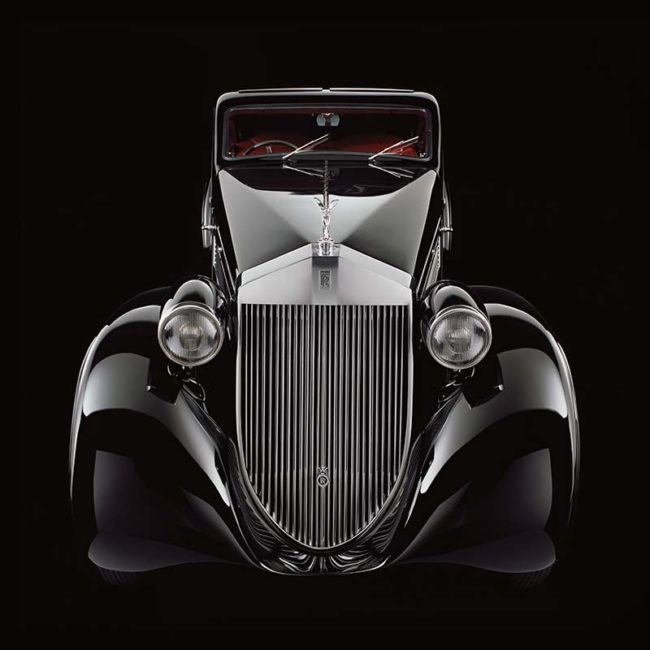 Front grille of the 1925 Rolls-Royce Phantom 1 Jonckheere Coupe, showcasing its unique rounded design and distinctive Rolls-Royce emblem
Front grille of the 1925 Rolls-Royce Phantom 1 Jonckheere Coupe, showcasing its unique rounded design and distinctive Rolls-Royce emblem
From Concours Glory to American Sideshow and Restoration
While not universally embraced by traditional Rolls-Royce purists, the Jonckheere Phantom I Coupe captivated Concours d’Elegance judges, winning the prestigious Prix d’Honneur at Cannes in 1936. Its journey continued through various owners until it arrived in the United States just before World War II. In America, its flamboyant style found a more receptive audience, but neglect led to its decline. Rediscovered in the 1950s in a derelict state, it was acquired by Max Obie, an early classic car enthusiast and entrepreneur. Obie initiated a restoration, famously painting it gold with gold flakes for maximum impact. To further amplify its allure, Obie fabricated a rumor of royal ownership by King Edward VIII, using the “Royal Rolls” as a paid spectacle in public venues.
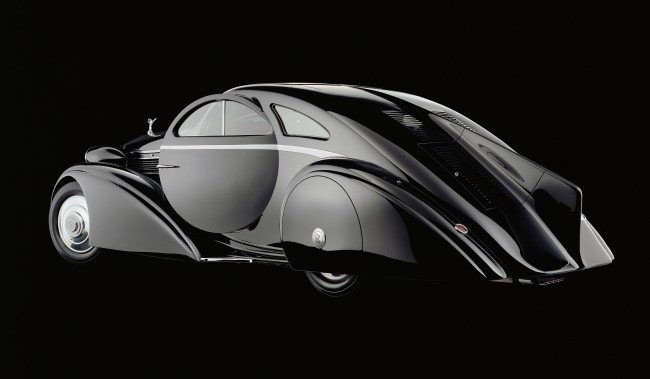 Rear side view of the Phantom 1 Jonckheere Coupe, emphasizing its long body, round door, and sloping roofline
Rear side view of the Phantom 1 Jonckheere Coupe, emphasizing its long body, round door, and sloping roofline
The “Round Door Rolls,” as it became known, continued to change hands, even undergoing an unfortunate off-white repaint. In 1991, at the peak of the classic car boom, it fetched $1.5 million at auction, finding a new home with a Japanese collector. Largely unseen until 2001, the Peterson Automotive Museum acquired it and commenced a meticulous ground-up restoration.
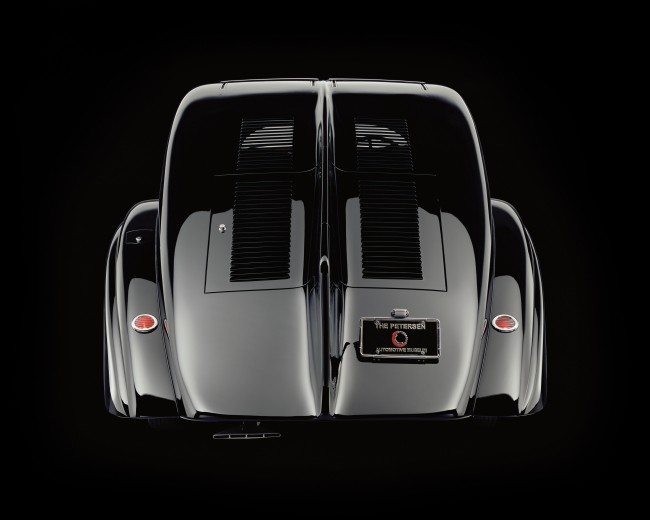 Rear view of Rolls-Royce Phantom 1 Jonckheere Coupe, highlighting the trunk and extended tailfin design
Rear view of Rolls-Royce Phantom 1 Jonckheere Coupe, highlighting the trunk and extended tailfin design
The restoration revealed well-intentioned but non-concours standard renovations by previous owners. Extensive research and verification were undertaken to ensure authenticity, with components reconditioned or replaced as needed. While the chassis and drivetrain remained true to its 1925 origins, the body and interior reflected its 1930s transformation. During paint preparation, traces of white, gold, and robin’s-egg blue were found beneath the surface, none being the original color. Black was chosen for the final coat to accentuate the car’s dramatic curves and imposing size, a color that best defines form.
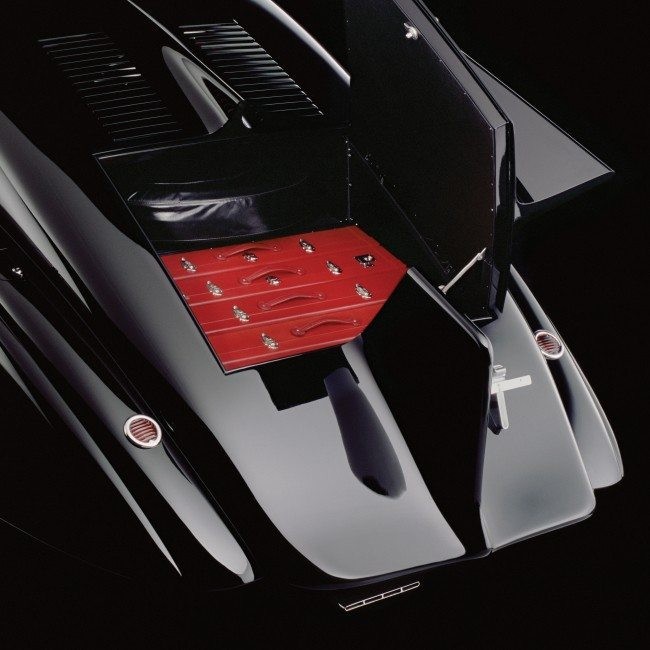 Rolls-Royce Phantom 1 Jonckheere Coupe trunk open, revealing custom fitted luggage designed to fit within the tailfin
Rolls-Royce Phantom 1 Jonckheere Coupe trunk open, revealing custom fitted luggage designed to fit within the tailfin
Driving the Dream: Performance and Presence
Driving the Phantom I Jonckheere Coupe demands driver engagement. Its sheer size makes steering heavy at low speeds, gear changes require double-clutching, and its weight necessitates ample braking distance. U-turns are certainly a challenge. The low ground clearance enhances its profile but poses issues with inclines and speed bumps due to the long rear overhang. The elevated seating provides excellent front visibility, but the sloping roof compromises rear headroom.
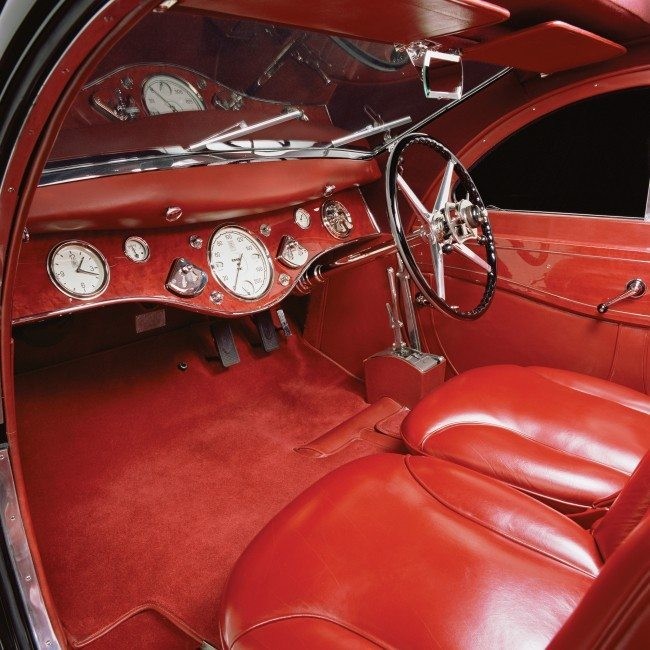 Interior view of the 1925 Rolls-Royce Phantom 1 Jonckheere Coupe, showcasing the dashboard with chrome accents and wood trim
Interior view of the 1925 Rolls-Royce Phantom 1 Jonckheere Coupe, showcasing the dashboard with chrome accents and wood trim
However, these practical considerations fade when appreciating the car’s true purpose: to captivate. Whether admired by onlookers, fellow drivers, or concours judges, this Rolls-Royce makes an unforgettable statement.
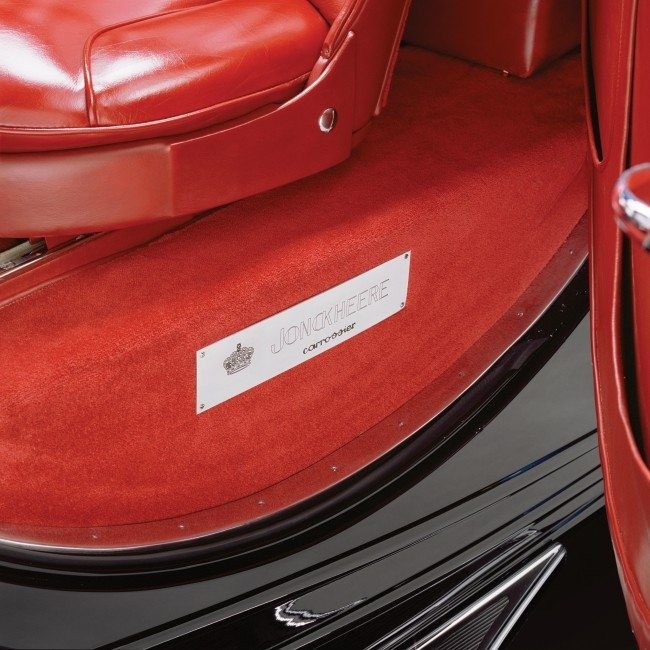 Rolls-Royce Jonckheere Coupe door sill plaque, indicating the custom coachwork by Jonckheere Carrossiers
Rolls-Royce Jonckheere Coupe door sill plaque, indicating the custom coachwork by Jonckheere Carrossiers
Concours Accolades and Lasting Impression
Since its restoration, the “Round Door Rolls” has graced prestigious events like Pebble Beach and Meadowbrook Concours d’Elegance. While missing records prevented top awards, it received the Lucius Beebe Trophy, recognizing the finest Rolls-Royce, and the People’s Choice Award at Meadowbrook. At Keels & Wheels, it claimed Best of Show European. This art deco masterpiece, after a long and eventful journey, now rightfully receives the admiration it deserves.
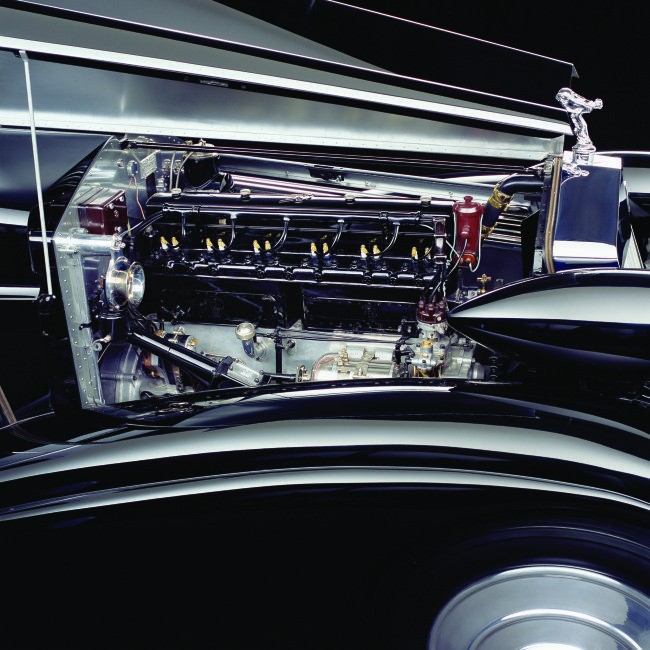 Engine bay of the 1925 Rolls-Royce Phantom 1 Jonckheere Coupe, displaying the meticulously restored straight-six engine
Engine bay of the 1925 Rolls-Royce Phantom 1 Jonckheere Coupe, displaying the meticulously restored straight-six engine
Specifications
Engine
Location: Front, longitudinal
Type: Naturally aspirated straight 6 with 2 cast-iron monoblocs, detachable iron cylinder head
Displacement: 7,668cc
Bore × Stroke: 107.9mm × 139.7mm
Compression Ratio: 4:1
Valvetrain: Pushrod overhead valves
Maximum Power: 108 bhp @ 2,300 rpm
Transmission: Four-speed manual
Dimensions
Wheelbase: 3,822mm (150.50 inches)
Track front/back: 1,485mm / 1,460mm
Weight: N/A
Source: Adapted from Car Collector Magazine, May 2007